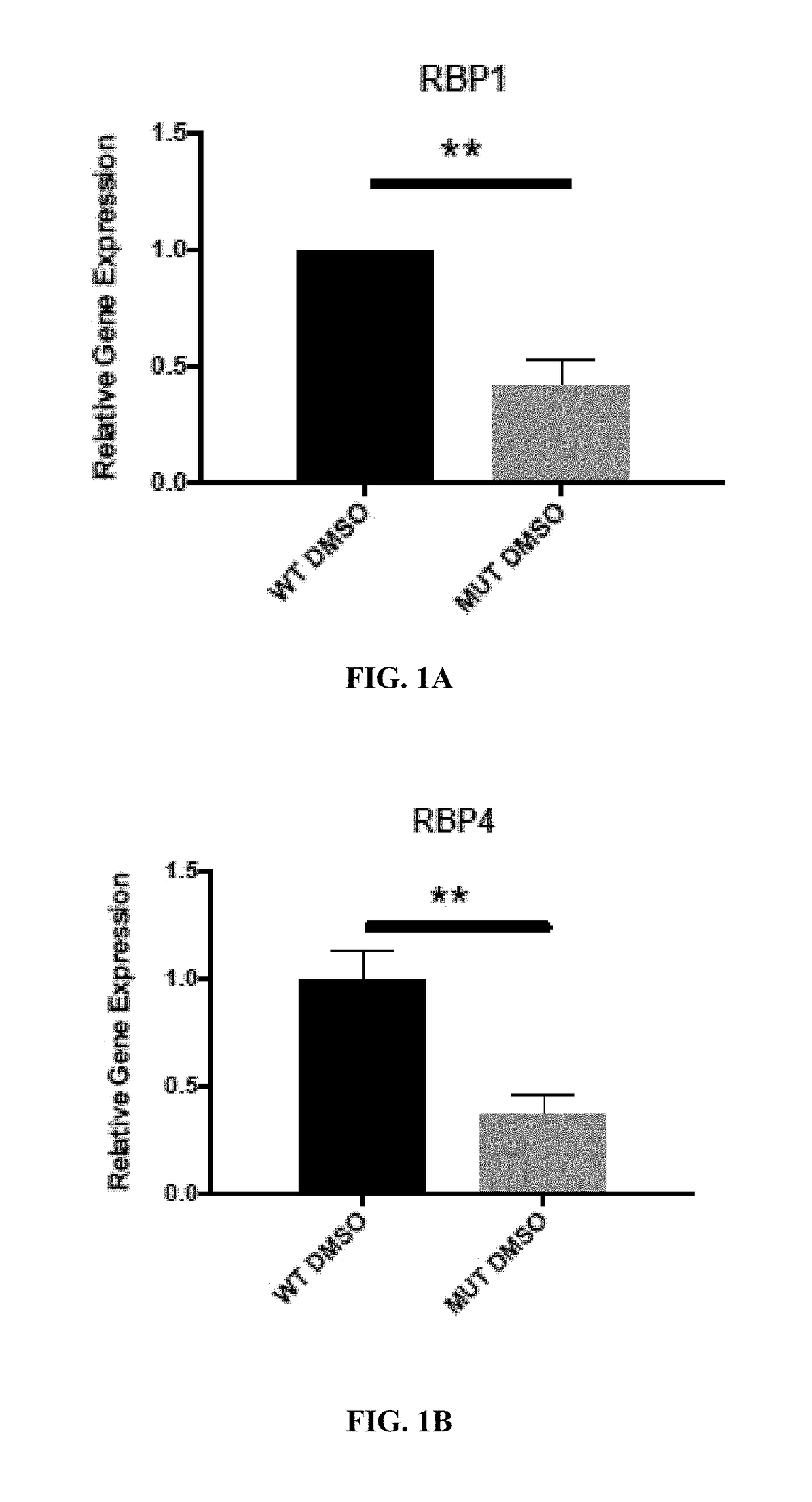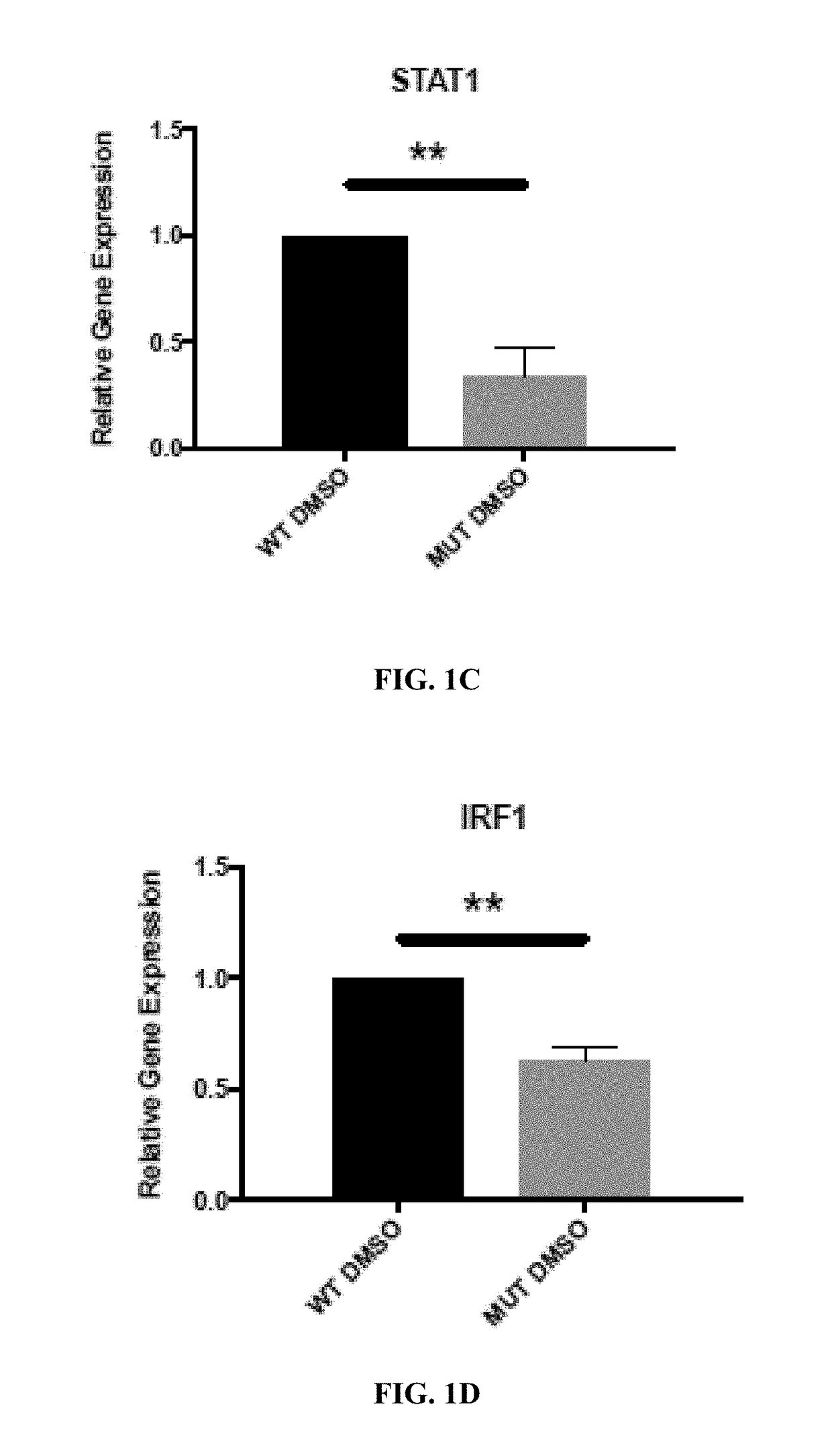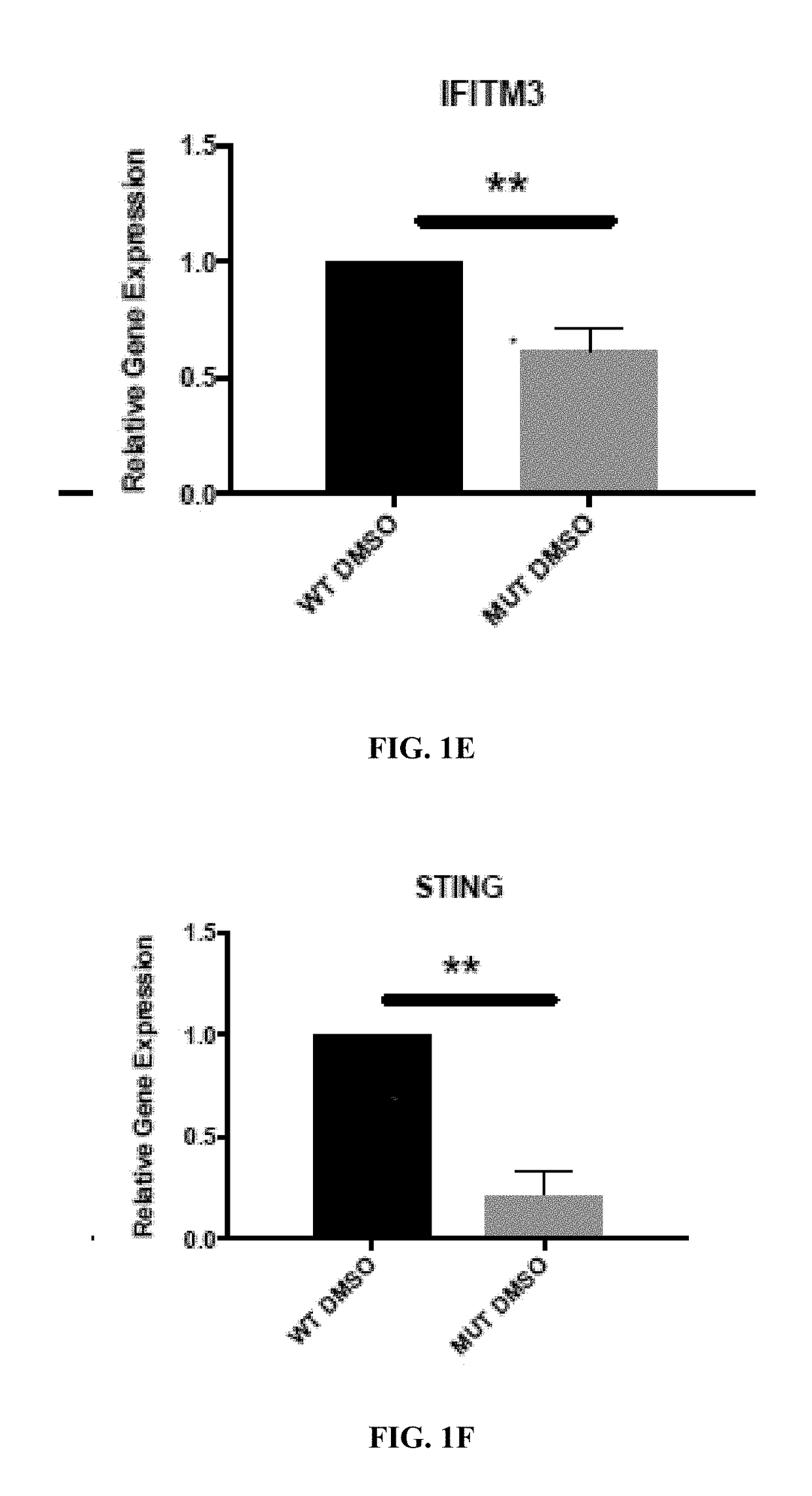Retinoid compositions and methods of increasing immune cell-mediated killing of idh mutant cancer cells
a technology of retinoid compositions and cancer cells, applied in the field of immunology and cancer therapy, can solve the problems of significant histone and dna hypermethylation
- Summary
- Abstract
- Description
- Claims
- Application Information
AI Technical Summary
Benefits of technology
Problems solved by technology
Method used
Image
Examples
example 1
Materials and Methods
[0083]Cell lines and Cell Culture. Immortalized human syngeneic astrocyte cell lines with retrovirally transduced IDH1 mutant (R132H) construct, IDH wild-type (IDHwt; also referred to herein as IDH wt, wtIDH, and IDH WT) construct and mock-transduced with a retroviral vector were obtained from Dr. Tim Chan's group (MSKCC). The cells were cultured in Dulbecco's Modified Essential Medium (DMEM) supplemented with 10% FBS, 2 mM L-glutamine, 100 U / ml penicillin, and 100 μg / ml streptomycin (Complete Medium, (CM)). All reagents were obtained from HyClone™ (GE Healthcare). The cells were maintained in a humidified incubator at 37° C. and 5% CO2. Medium was replaced every 2 days and the cells were split when they were about 80% confluent. All cell lines were negative for mycoplasma infections.
[0084]Glioma cell culture. Resected tumors from Glioma patients (both IDH wt and mutant) were mechanically dissociated to form a single cell suspension. Contaminating RBCs were remo...
example 2
Involvement of CCL2 in RA-Mediated Tumor Growth Stasis
[0116]IDH WT and MUT (IDH1 R132H) tumor-bearing mice were treated with 10 mg / kg ATRA every alternate day starting on day 18 after tumor inoculation. Mice were also injected with 1 μg anti-CCL2 neutralizing antibody (or anti isotype antibody) on the 1st day of ATRA treatment. CCL2 blockade reversed ATRA-mediated tumor stasis in a MDSCs and NK cell dependent manner (FIG. 10A-E).
example 3
RA Treatment in Chondrosarcoma IDH Mutant
[0117]IDH mutant (HT-1080, R132C IDH1 mutation) chondrosarcoma cells were treated with different doses of ATRA or DMSO for 48 hours. After treatment, cells were evaluated for viability (FIG. 11A) and apoptosis by caspase activity (FIG. 11B). ATRA decreased cell viability and induced apoptotic cell death in IDH mutant chondrosarcomas. Additionally, IDH WT cells and IDH mutant chondrosarcoma cells were treated with different doses of ATRA or DMSO for 48 hours. ATRA treatment increased 7-AAD levels corresponding to increased apoptotic cell death in a dose-dependent manner (FIG. 11C).
[0118]IDH mutant tumor cells produce reduced amounts of RBP1 compared to WT IDH tumor cells (FIG. 11D). 1 μM or 10 μM ATRA treatment for 48 hours increased RBP1 levels in IDH mutant chondrosarcoma cells in a dose dependent manner (FIG. 11E). These results show that increasing amounts of ATRA can concomitantly increase the levels of RBP1 in IDH mutant tumor cells.
[011...
PUM
| Property | Measurement | Unit |
|---|---|---|
| Immunogenicity | aaaaa | aaaaa |
Abstract
Description
Claims
Application Information
 Login to View More
Login to View More - R&D
- Intellectual Property
- Life Sciences
- Materials
- Tech Scout
- Unparalleled Data Quality
- Higher Quality Content
- 60% Fewer Hallucinations
Browse by: Latest US Patents, China's latest patents, Technical Efficacy Thesaurus, Application Domain, Technology Topic, Popular Technical Reports.
© 2025 PatSnap. All rights reserved.Legal|Privacy policy|Modern Slavery Act Transparency Statement|Sitemap|About US| Contact US: help@patsnap.com



